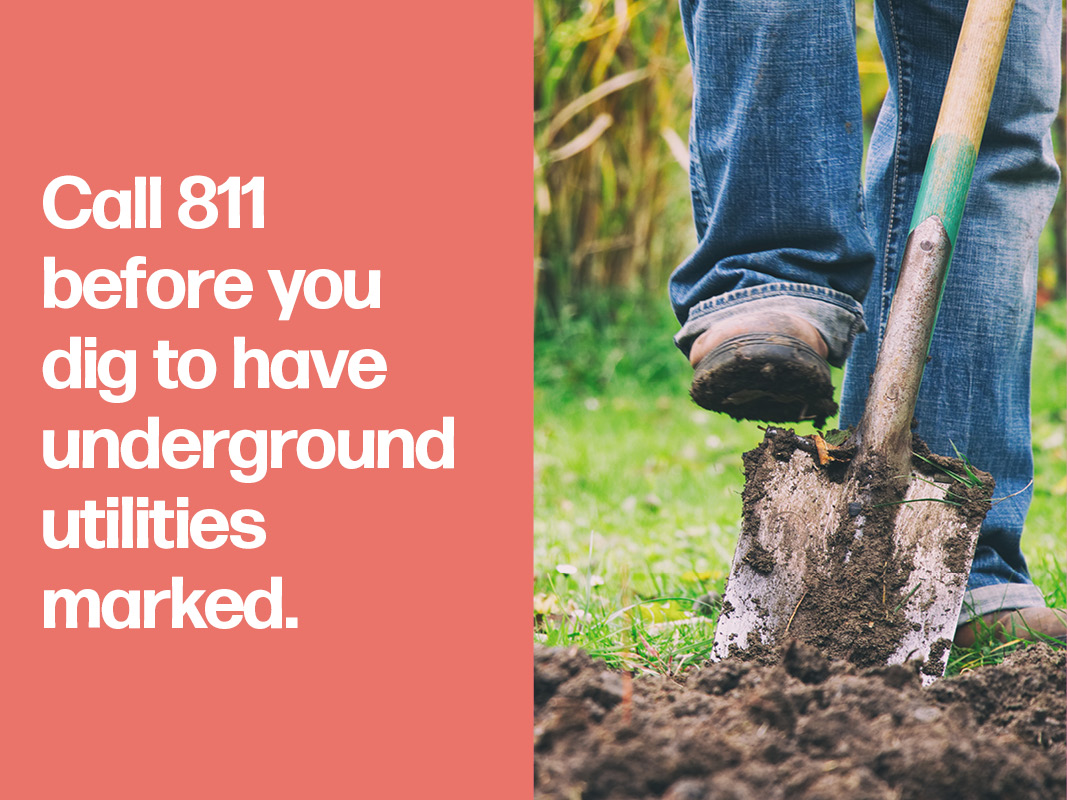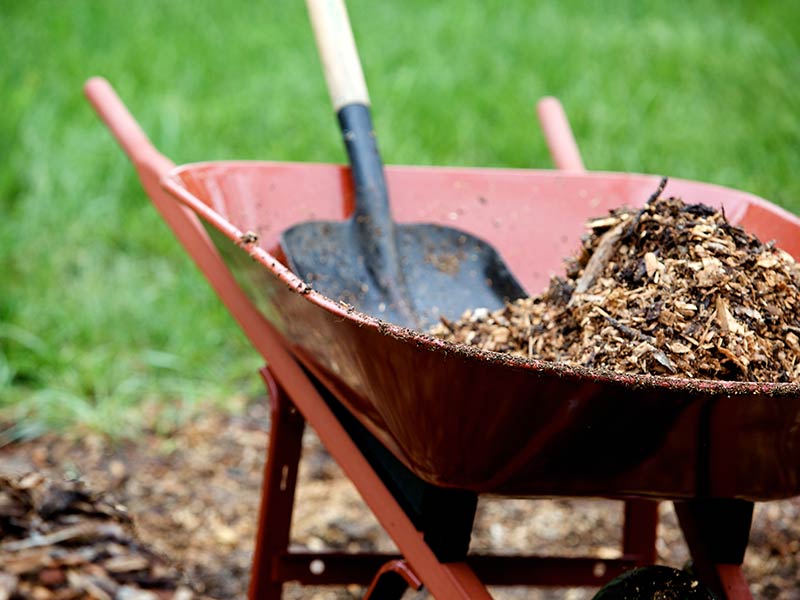

Tree Safety & Maintenance
Tree pruning keeps you safe and our power reliable.
Home, green home
Without a doubt, Oregon’s trees greatly contribute to the natural beauty that surrounds us. The ability to go for a hike beneath a forested canopy or relax in the leafy shade on a warm day are reasons many of us love to call the Northwest home.
But unfortunately, trees and power lines aren’t a good combination. So, with safety always as our top priority, PGE vegetation crews regularly prune trees to maintain necessary clearances.

Utility pole 101
Depending on the neighborhood you live in, different types of overhead lines may be visible. Because of this, the methods of tree pruning will vary accordingly. Not all lines you see attached to utility poles are PGE power lines.
PGE Power Lines
Transmission lines: These are usually located on tall, metal towers that extend up to 180 feet into the air. They transport high-voltage electricity to large population centers and are a critical part of our infrastructure. Because of this, we maintain year-round clearances around these lines to reduce the likelihood of an outage occurring.
Primary distribution lines: These serve local neighborhoods and are typically located at the very top of power poles, above the pole-mounted transformer. When we prune, our crews will remove enough vegetation to maintain at least 10 feet of clearance around these lines.
Secondary distribution lines: Most often you’ll find these on the same poles as the primary distribution lines, but below the pole-mounted transformer. These usually carry electricity directly to a building in conjunction with the service wire (below). If we see that branches are creating a strain on, or are abrading, these secondary lines, we’ll prune them.
Service wires: These extend directly from the secondary distribution lines (above) to the wall of a home or business. We ask for customers' help in maintaining clearances by not planting vegetation underneath and/or around these wires. If we find branches that are creating a strain on or abrading service wires, we’ll prune them.
Let's work together
Tree Planting Guide
Help prevent outages, reduce fire risk and make maintenance easier for you and our crews! Follow the "right tree, right place" guidelines to learn more about selecting, planting and caring for your trees properly.
Managing trees near power lines
Trees may grow slowly, but they need regular pruning, especially in urban areas. Our team of arborists and forestry experts works hard to keep you safe and reduce the chance of power outages.
Free wood chips
Our crews generate a lot of tree chips each year. We want to recycle all of them as efficiently as possible. That’s why we offer free wood chips in neighborhoods where we’re actively working!
We prune trees because safety comes first
PGE often works with local tree contractors to assist us in our on-going tree trimming efforts. Our contract tree crews will visit your area every two to three years to inspect and prune trees along power line rights of way. We follow precise standards and practices in maintaining trees. Our experienced contract crews are directed by PGE foresters who have extensive education and training in both urban forestry and electrical safety. The Oregon Public Utility Commission regulations require us to do this work, because trees cause the majority of power outages in our area during storms. Pruning helps prevent outages and downed lines and maintain a high level of safety and reliability.
Frequently asked questions and answers
Why does PGE prune trees?
Public safety: Pruning helps keep people safe who work in or near trees growing close to power lines.
Fire safety: Trees that come into contact with a high-voltage power line can catch fire and quickly spread.
Outage reduction: Trees are the most common cause of outages here in Oregon.
What if I don’t want my trees to be pruned?
We understand how important trees are and share your concern. Rest assured, PGE follows safety protocols and guidelines, pruning only as much as needed and always with the tree's health in mind.
What if I have underground power?
If that’s the case, no maintenance work will be done on your property. We’re only sharing this information for your general awareness.
How much are you going to prune my trees?
We understand you’re concerned. The Oregon Public Utility Commission (OPUC) establishes minimum vegetation clearance requirements that vary depending on the amount of voltage a line carries. As a general rule, pruning 10 feet around primary lines is common. But remember pruning takes place every two or three years. So the amount may vary based on voltage of the line, tree species and growing patterns; extra distance may be created to help ensure things don’t grow back and become too close before crews return. For more about these regulations, please visit secure.sos.state.or.us/ and search for rule 860-024-0016.
When can I expect crews to arrive?
On average, tree maintenance projects take three to four months to complete. Depending on where your property is on the work map, crews may arrive sooner. If you have a locked gate or animals on the property, crews will coordinate with you to make sure they have proper access.
What if I want a tree removed?
It’s uncommon for us to remove entire trees during maintenance pruning. But there are some situations where a dead or dying tree may be determined to be a safety hazard and will need to be removed. If that’s the case, a PGE forester will contact you to coordinate its removal. If you have a tree near a powerline that you’re concerned about, please give us a call at 503-736-5460.
How will I know when PGE will be in my neighborhood?
We’ll send you a letter when we’re planning to work in your neighborhood. Or, you can email us if you would like to know when we’re planning on working in your area. For more information, email forestry@pgn.com.
Trimming trees near PGE power lines?

Call before you trim
Trimming trees, especially near power lines, can be dangerous work. This is especially true if you're working near high-voltage lines. Call the PGE Tree Hotline at 503-736-5460 before you start work so that we can help you do it safely.
Stay safe! Remember these tree safety tips.
Call 811 at least 2 business days before you dig to have underground utilities marked.
Call the PGE Tree Hotline at 503-736-5460 for advice or assistance before working on trees near power lines.






1 / 3
Wildfire Safety
Even in historically wet, mild Oregon, summers are getting hotter and dryer with longer wildfire seasons, and the overall risk of wildfires is increasing. Because the electrical grid has the potential to cause wildfires, we’re doing more now to reduce the risk later, and keep you – and Oregon – safe.
Outdoor Safety
When you’re doing yardwork or DIY projects, remember:
Electricity can jump. Pay attention to where lines are and what you’re doing that might provide a path for electricity to travel through you to the ground.
Call 811 before you dig. If you don’t call and you hit an underground line, you could be injured or killed. You may be held liable for damages.
Contractors & landscapers
Keep your crew safe, whether they’re digging, building, landscaping or performing routine maintenance outdoors.
CUSTOMER SERVICE
7am-7pm, Monday – Friday




